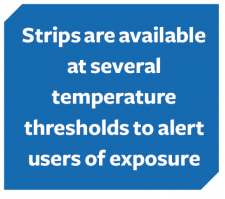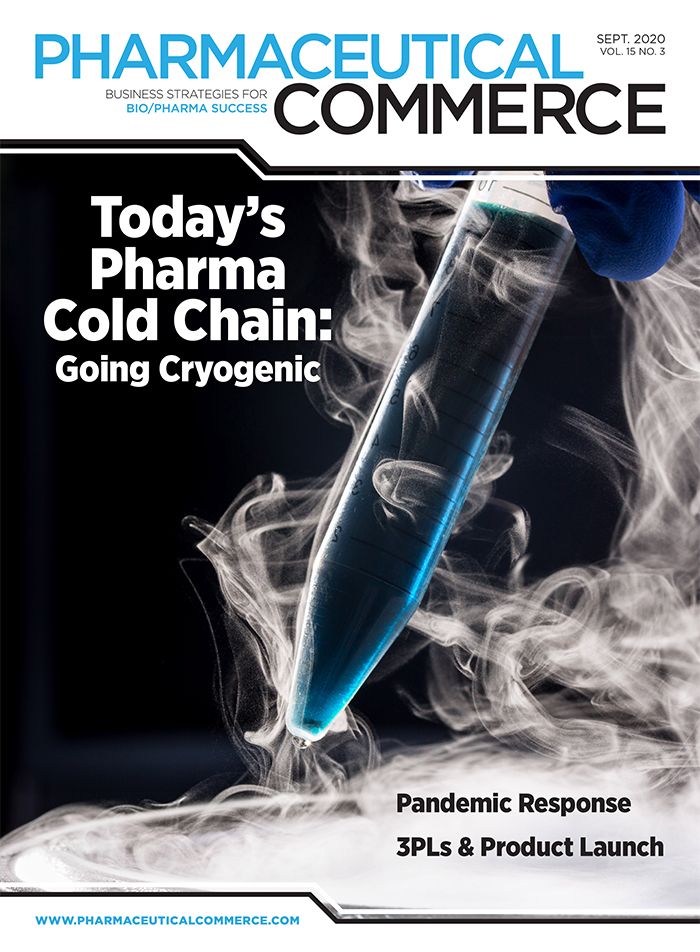Securing disrupted cold chains with temperature-monitoring devices
The role of these tools amid evolving regulatory, geography, and accessibility considerations
When it comes to the operation and optimization of supply chains, cold chain products have proven to be a temperamental obstacle. Medical and pharmaceutical companies have relied on temperature-controlled supply chains for several decades to preserve and maintain the usability of their temperature-sensitive products. Without total transparency or the ability to monitor temperature at every link in the chain between production and consumption, these complex cold chains are subject to detrimental disruption and irreversible product damage.
While the need for a reliable cold chain is far from new, this demanding logistic segment must now grapple with additional challenges brought about by the global pandemic. Increasing demand at reduced capacity is amplifying the potential for disruption along the chain, while new products and regulations relating to COVID-19 are introducing unprecedented obstacles. Despite these issues, the fight to defeat COVID-19 has made secure transportation of temperature-sensitive pharmaceuticals, test kits, and related medical supplies more critical than ever before. Fortunately, temperature-monitoring devices offer an integral solution for current challenges in securing pharmaceutical cold chains.
Cold chain products
Temperature control is a top issue in cold chain logistics because even the slightest variations can significantly affect the quality and safety of products. Medical supplies, pharmaceutical products, and vaccines need cold temperatures for storage throughout their lifecycle. Blood, transplant organs, medications, tissue samples, and several other medical products have extremely strict temperature-control regulations that must be prioritized to ensure their usability. Because the chemical makeup of different pharmaceutical products varies significantly, so do their relative storage requirements. When a medication is exposed to climates outside a specific temperature range, whether it be too high or too low, its chemical stability will likely be impacted. These drugs will degrade and form impurities that could pose potential health threats if administered to patients.
Changes to a drug’s physical properties such as variations in color or texture and presence of strong odor are obvious indicators of improper storage. In some cases, however, impurities are not visible to the human eye. If consumed or used, these products could range from being simply ineffective to incredibly dangerous to the consumer’s health. In addition to the physical harm it can cause patients, a breach in the cold chain can also cause economic harm to suppliers. The cost of disposing and replacing these pharmaceuticals can amount to tens of billions of dollars annually.
All these issues remain growing threats to cold chain logistics, as the number of cold chain products continues to grow exponentially, and the industry increasingly focuses on product quality and sensitivity.
Now that we are in the middle of a pandemic, the dangers of temperature deviations for pharmaceutical products also apply to COVID-19 test kits, related medical supplies, and vaccines. A COVID-19 test involves swabbing a patient’s nose and mouth, and transporting the swab in a kit to a predetermined testing lab. According to the Centers for Disease Control and Prevention’s (CDC) guidelines, these specimens must be refrigerated within a temperature range of 2–8 °C, then processed within 72 hours after collection. Some major commercial labs prefer specimens to be frozen at -20 °C during transportation. Refrigerated samples older than 72 hours and samples exposed to temperatures outside the required range may lead to faulty results and rejections. Temperature deviations can cause the virus to die in transit, potentially leading to false negative results if not detected and rejected. Patients may then unknowingly continue to spread the virus. Rejected samples require re-tests that take valuable time and may lead to the need for additional testing as a patient with false results infects more people, using valuable lab capacity and costing more money.
Vaccines are one of the most common cold chain products in the medical field. A vaccine’s potency is reduced every time it is exposed to an improper condition, including overexposure to heat, cold, or light at any point between manufacturing and administration. Once lost, potency cannot be restored. Regulations for different vaccines vary in much the same way as medications, but every vaccine is considered a cold chain product. In a world eclipsed by COVID-19, several biopharmaceutical companies across the globe are working tirelessly to pursue a vaccine to stop its spread, each of which are using different methods and technologies for a unique product. As such, there is no current universal temperature requirement for maintaining the vaccines’ stability.
Technology and transport
An unbroken and properly functioning cold chain delivery system keeps temperature-sensitive pharmaceutical and medical products within the required ranges from their manufacturing stage to their point of use.
Medicines, vaccines, test kits, and other pharmaceutical products are made and packaged by the manufacturer before being transported in refrigerated vehicles or insulated containers to their destination, where they are then sold or administered. Depending on demand, capacity, and location, products may also be stored in refrigerated warehouses before or between shipments.
With numerous touchpoints and transportation methods to consider for each medicine, the stakes remain high for logistics providers tasked with safely transporting these products across the world.
The COVID-19 pandemic has disrupted the cold chain process for pharmaceuticals and medical products as related shutdowns have limited cold chain capacity while the demand for product delivery only continues to soar.
Additional pressure has been placed on carriers to meet delivery demands of COVID-19 test kits, vaccine trials, protective medical equipment, and prescriptions for at-risk individuals sheltering at home. Prioritizing these products means that other temperature-sensitive medications are subject to unexpected delays and subsequent temperature deviations. New laws and regulations from US and foreign jurisdictions have also impacted the development and transportation of COVID-19-related products.
Test kits and vaccine trials have their own unique set of standards regarding temperature during transportation, and many organizations that rely on these cold chains must now consider foreign regulations, geography, and accessibility in their effort to maintain control over the climate their products experience.
Despite all the complexities, cold chains demand integrity and accountability. Digital technologies like temperature loggers can play a major role in ensuring these demands and securing cold chains in the age of COVID-19 and beyond.
Temperature-monitoring devices
Temperature monitors are portable instruments designed to sense and record temperatures of the indoor and/or outdoor environments of cargo on the cold chain. Consisting of two main parts, the recording system picks up the temperature measured at preset intervals by the sensor and saves the measurements. This provides manufacturers, transporters, and recipients a comprehensive record, complete with time stamps, of the various conditions the products have been exposed to. Not only do these devices certify the safety and usability of the product, but they provide real-time visibility throughout the chain. Logistics operators are then able to pinpoint inconsistencies, proactively respond to disruptions, and reduce the likelihood of product damage.
Temperature loggers are available in several different models to address the various needs of users. For most in-transit purposes, temperature recorders have both a sensor and data recorder integrated into a compact and lightweight device. At the end of its journey, data is retrieved from these recorders and downloaded using a USB.
More advanced models allow the use of a wireless network to transmit the measurements. With this method, manufacturers, handlers, shippers, and recipients are alerted when a product is exposed to temperature conditions beyond a specific threshold.
Single-use temperature indicators are another option in the cold chain cycle. These strips are available at several temperature thresholds to alert users of exposure to unacceptable

temperature conditions and the time duration during which the products remained outside their ideal range. These types of monitors can be used to ensure COVID-19 test kits remain frozen during shipment as well as storage to avoid false negatives and meet Centers for Disease Control and Prevention (CDC) shipping guidelines.
Altogether, there is a wide range of devices currently available to meet the evolving protection standards for cold chains and solve some of its greatest challenges. Without sensors, there is little-to-no comprehension of climate conditions once pharmaceuticals and medical products leave their labs or manufacturing facilities. Products can unknowingly be damaged by temperature variations and can put patients at risk. Implementing temperature-monitoring devices within the shipping and handling stages of the pharmaceutical and medical cold chain render them more transparent, reliable, and secure.
These cost-effective monitors are a necessary investment for managing the transportation and distribution of medicines, test kits, and vaccine trials during the pandemic, and will likely play a vital role in the discovery and subsequent administration of a COVID-19 vaccine for the global community.
About the author

Angela Kerr is vice president of product portfolio and program management at SpotSee
